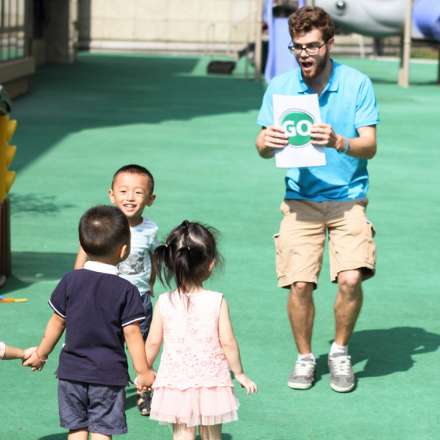Starting a lesson with a simple, fun speaking activity (also known as a ‘warmer’) creates a great buzz that will last for the whole class. When your students arrive, they may not have spoken a single word of English for a week, and so they’ll probably be nervous. Your job is to make them relaxed and comfortable speaking English again in a positive environment; and a great way to achieve this is by planning an effective warmer. If you’re not sure what an effective warmer looks like, don’t worry! We’ve got you covered…
First off – Rules of thumb for a great warmer:
• Get students talking to students in pairs, in groups, or mingling and changing partners/groups. (The teacher talking to one student at a time is not a warmer!)
• Make sure the language is familiar – we’re not teaching anything new here!
• Don’t correct students, as it will inhibit them
• Think of ways to include physical movement
• Make it fun!
Here are 5 warmers every TEFL teacher should know. Feel free to use them as they are, or create your own variations. They’ll work with almost any level of ability – if your class is very high or very low ability, you can adjust to make the language more complicated or simpler, as required.
1. True/False Game
1) Ask students to write down three statements about themselves: two true and one false. (You can do an example for yourself – don’t make the false one too obvious!)
2) Students mingle, and tell each other their three statements. The others have to guess which are true and which one is false.
3) Finally ask students to share things they found out with the whole class.
2. Picture Mingle
1) Each student draws three things in their life on a post-it (e.g. their house, dog, and a neighbour).
2) Get students to stick the post-it to their front or their arm.
3) Play some music. Students dance around the room.
4) When the music stops they ask the person nearest them about their pictures.
5) Play the music again and repeat several times.
3. Hot Seat
1) Put the students into small teams.
2) One person from each group sits with their back to the whiteboard.
3) The teacher writes a word they’ve recently learned on the whiteboard.
4) The rest of the group, who are facing the whiteboard, then have to describe the word to the person with their back turned, without saying the word. This student then has to guess what they think it is.
5) The person who guesses correctly wins a point for their team. They stay in the seat out the front, and the others have to swap with another team member.
(Variation: The students with their backs to the whiteboard ask their teams yes/no questions to work out the word.)
4. Line-Up
1) Ask the whole class, ‘How long does it take you to get to school?’. Elicit several answers.
2) Tell the students to line up against the wall, from the shortest time taken at one end, to the longest time taken at the other (students will need to mingle and ask each other to work this out).
3) Once the students are lined up, divide them into pairs. Ask them to talk about a related topic (e.g. what happened on the way to school?)
4) Repeat the line-up with a different question.
(This works with any question that will let you sequence students: ‘When’s your birthday?’, ‘How long have you been in the UK?’ etc. It has to be something they need to ask each other to be able to do – it doesn’t work, for example, with height!)
5. Find Someone Who…
You’ll need to prepare a set of ten ‘find someone who’ questions (preferably related to one topic), and make a copy for each student. For example:
Find someone who:
… has met a celebrity__________
… has been on TV or radio __________
… has sung in front of a large group __________
(etc.)
1) Do an example on the whiteboard. Elicit the questions students need to ask (e.g. ‘Have you ever met a celebrity?’).
2) Students mingle and ask each other the questions. If someone says ‘yes’, they should write the person’s name on the line (there should be a different name on each line). They can ask for more detail but don’t need to write this down.
3) Finally, ask the class to share something interesting they’ve learnt about someone.
For more warmer ideas, have a look at our Essential TEFL book, which contains over 300 warmers and activities – perfect if you need a bit of inspiration!
Still need to get TEFL qualified? Take our quick course quiz to find out which TEFL course is your perfect match in under 2 minutes! Alternatively, you can arrange for a free call back with one of our amazing TEFL experts, who will be able to talk you through all your options and answer any questions you might have!




